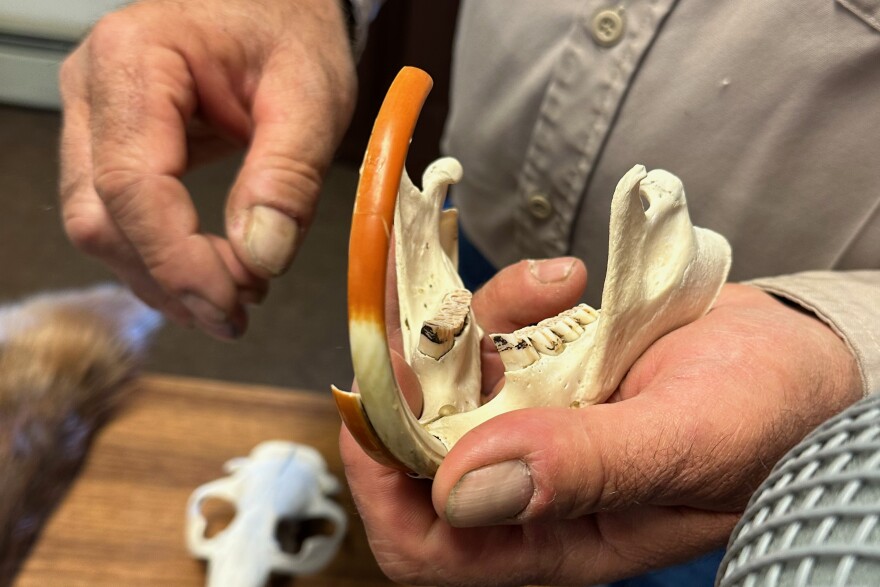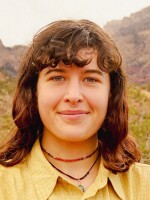This story is part of the Tribal Water Media Fellowship Program, a collaboration between KSUT Public Radio, Fort Lewis College, and Rocky Mountain PBS. The project gets support from the Walton Family Foundation. Independent producer Adam Burke provided story editing.
It was a windy fall day in Gunnison, Colorado. In a parking lot behind the Colorado Parks and Wildlife office, Dan Zadra wrestled with a mean-looking contraption made of stout wire.
“This is what revolutionized Beaver trapping,” he said. “These are extremely dangerous.”
I visited Zadra last September to learn about beavers from a man whose life has been closely entwined with the animals since childhood. Not surprisingly, a deep understanding of beavers begins with a close look at the history of human-beaver interactions.
Dan pounded metal stakes into the ground to secure the gadget, called a “body grip trap,” a steel rectangle with an opening in the middle. Its lethal function was easy to see as Zadra triggered the trap.
“Dislocates the neck, pretty much,” he said.
We imagine the beaver swimming through the opening and springing the device, which kills them instantly or slowly drowns them.
"Kind of like a roach motel…you check in, and you don’t check out,” said Zadra with a soft smile. “If the mountain men would have had these, they would have decimated the beaver population even more than they did.”
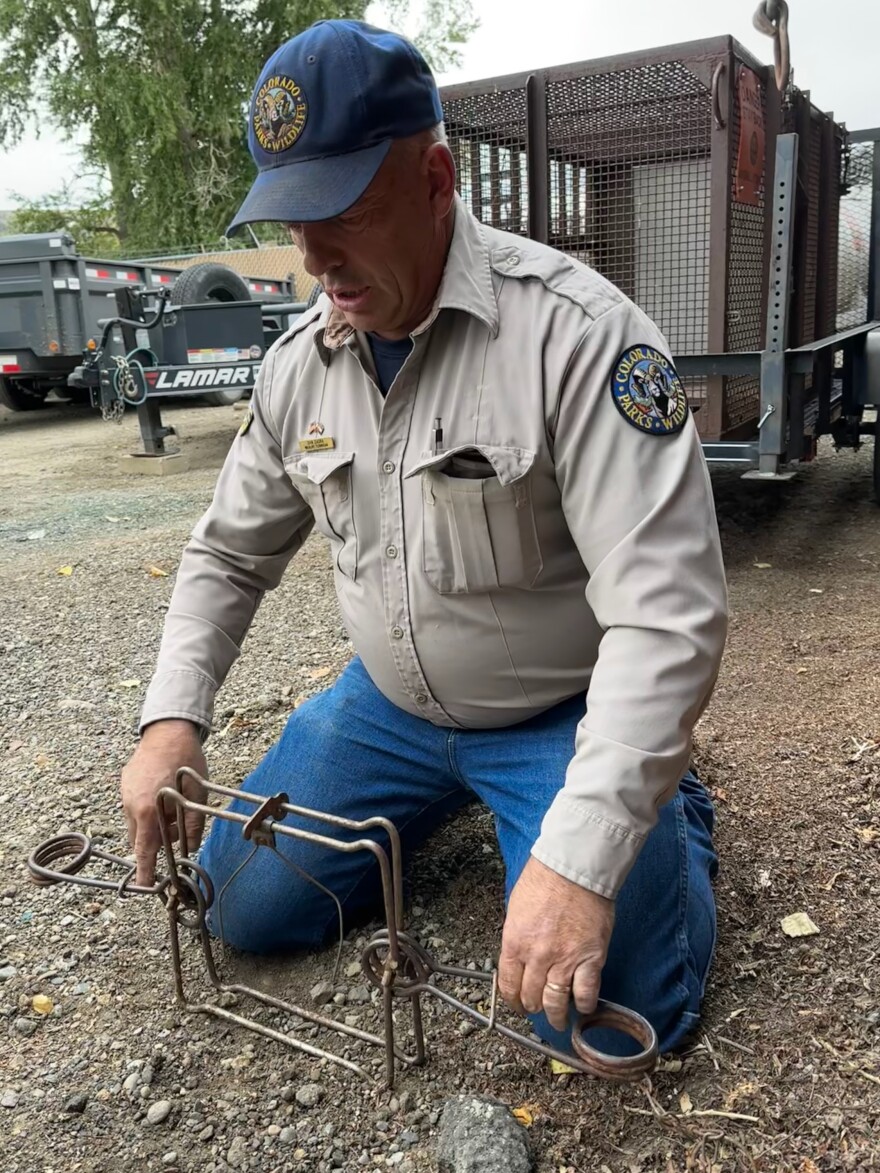
The body grip trap was invented in the 20th century, and for decades, trappers used devices like these to catch and kill beavers. But in 1996, Colorado outlawed lethal and harmful traps.
Beavers and humans have a history of not getting along well, and that’s partly because of our similarities. Like humans, beavers terraform the landscape to create an ideal habitat for their preferred way of life. But unlike humans, these mammals have evolved to live around water.
“They're just fascinating animals,” says Dan. “When they hear water running, they can’t help themselves. They've got to do everything they can to stop (the water) or slow it down.”
Beavers cut down trees with sharp front teeth, dragging trunks, branches, and sticks into place to dams waterways. Once they have a pond in place, they build an island of sticks, lumber, and mud that protrudes above the surface with a hollowed-out interior only accessible through tunnels that run beneath the water line. By slowing down creeks and streams, beavers allow water to seep into the ground, nourishing habitat for other animals and replenishing the water table.
Up close, beavers are curious creatures. They have a second set of transparent eyelids that allow them to see underwater. They have a second set of lips behind their front teeth so that they can carry sticks underwater while holding their breath at the same time.
Then there are those big front teeth, sharp enough to fell a tree. The roots of their teeth run deep into their skulls, allowing them to grow back quickly.
It's this unique biology that puts beavers at odds with human beings. Left to their own devices, beavers will plug up culverts, flood roads, and destroy irrigation systems.
Raised by mountain men
Dan works for the state as a wildlife specialist. These days, relocating problem beavers is part of his job. However, as a kid growing up in Leadville in the 1970s, Dan learned to trap and skin the animals for fur from the time he was eight years old.
“I did a lot of reading as a kid, so it was easy to put myself in the tracks of a mountain man,” he said.
As a young trapper, Dan learned the secret lives of beavers: how and where to find the animals, how to outwit them, and even how to track them in the middle of winter below frozen lakes and streams by tracing the air bubbles that beavers leave behind when they swim under the ice.
“You can scrape the snow off the ice and see these paths of bubbles, so you know that's where that beaver is swimming,” he said.
This was the 1970s when there was still a fur trade in the Colorado Rockies. Dan trapped and skinned, building up a supply of pelts to sell to a fur buyer.
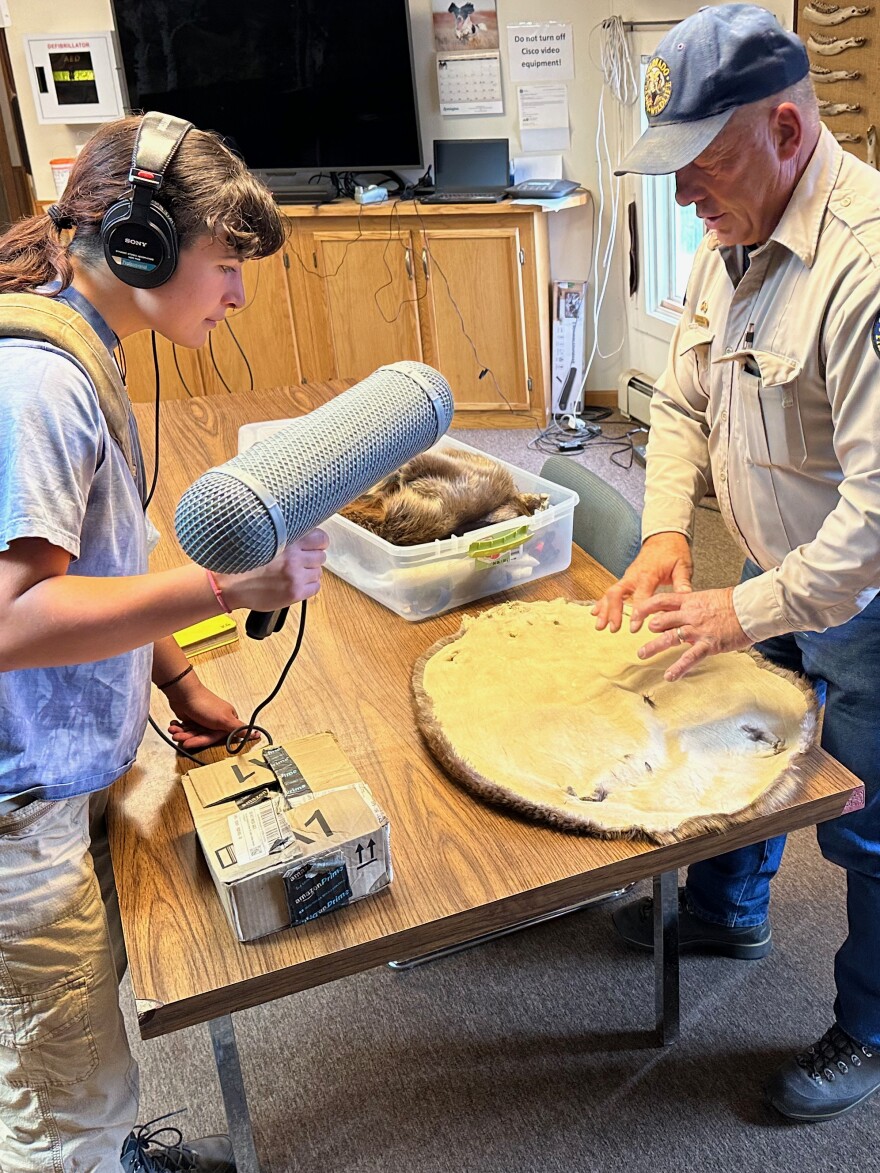
Now, Dan Zadra uses all of this trapping know-how to save beavers rather than kill them. When local ranchers have problems with a beaver disrupting an irrigation system, they call Dan.
“People aren't near as quick to kill them or get rid of them as they used to,” said Zadra.
The virtue of beavers
The trapping tradition that Dan Zadra grew up in marked the end of a centuries-long era in North America. When European settlers arrived, they viewed the animals (or at least their fur) as a commodity, and beavers were in abundance. There were as many as 400 million on the continent in pre-Columbian times.
“Beaver pelts, along with timber and cod and gold, were one of the most important economic resources that European colonists found in the quote-unquote new world,” said Ben Goldfarb, author of Eager: The Secret Lives of Beavers and Why They Matter.
Beaver pelts were used to make hats, coats, and other fashion accessories, which were sold in the United States and to merchants in France and other European countries.
As white settlers crossed the continent, they trapped the animals nearly to extinction. By the early 1900s, trapping and fur trade profits were in decline, but people still found reasons to kill beavers.
“We persecuted beavers as pests," Goldfarb said. “Beaver populations started to recover after this long history of industrial fur trapping, and as beavers recovered, we started to consider them nuisances.”
Eventually, humans (or at least some humans) realized that beavers are virtuous. The presence of beavers means more water in the ground and better habitat for other animals.
“These animals provide all kinds of crucial ecological benefits and services, from drought mitigation to flood control to carbon sequestration, to the creation of habitat for endangered species,” said Goldfarb. “We’re starting to recognize that these are animals we want back on the landscape.”
Dan Zadra: Beaver Believer
It may seem unlikely that a man who spent a good part of his childhood trapping and killing beavers would have genuine affection for them. But just an afternoon with Dan Zadra reveals his compassionate side. When he’s relocating a beaver, he lines the transport container with material to make sure the animals are comfortable.
"I don't want them walking on hard stuff," he said. "So I put....a bunch of vegetation, wet grass, and willows in there because they're soft-footed."
We drove west out of Gunnison to a creek north of Blue Mesa Reservoir, where Colorado Parks and Wildlife manages a plot of state land. Zadra has worked this land for years, cultivating grass and alfalfa for winter elk forage and maintaining a network of irrigation ditches.
It’s also a place where he has relocated beavers.
He led us down a steep slope toward the creek, through dry grass and thickets of wild rose, to a braided stream with dozens of small ponds.
Zadra pointed to an area where the flowing water had gone slack into a glassy pond. “So we're gonna sneak down there, and hopefully, we won't scare him,” he whispered.
We were hoping to see a beaver, and at one point, Zadra froze, pointed again, and then shrugged. “It was just a fish,” he said.
It was late afternoon, a little early for these nocturnal creatures. Maybe it was just as well that we didn’t disturb them.
We’re mostly here to see Dan Zadra in his habitat–once a trapper and now an unabashed beaver lover.
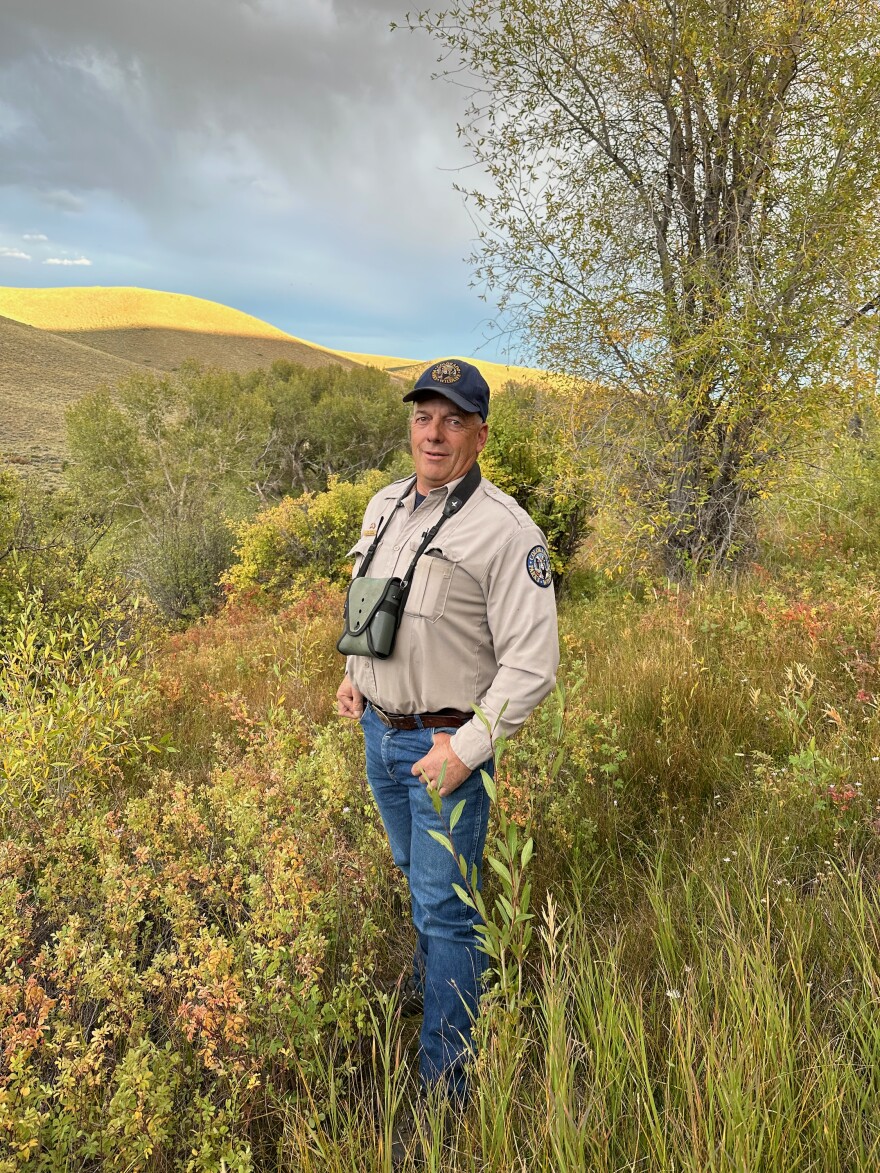
“I was ahead of the game. I was a big beaver fan before it became a thing,” he said.
Dan Zadra learned how to trap and kill from the last of the Colorado mountain men. Now he’s a beaver conservationist, which is good for the wildlands of Colorado. Especially for the beaver.
“I think I always appreciated them,” he said. “But now I think I appreciate them living more than dead. They not a dollar sign to me anymore, or something that I feel I need to conquer.”
Klara Goldman's reporting comes from the Tribal Water Media Fellowship Program–a collaboration between Fort Lewis College, KSUT, and Rocky Mountain PBS, with support from the Walton Family Foundation. Independent producer Adam Burke provided mentoring and editing for this feature story.


